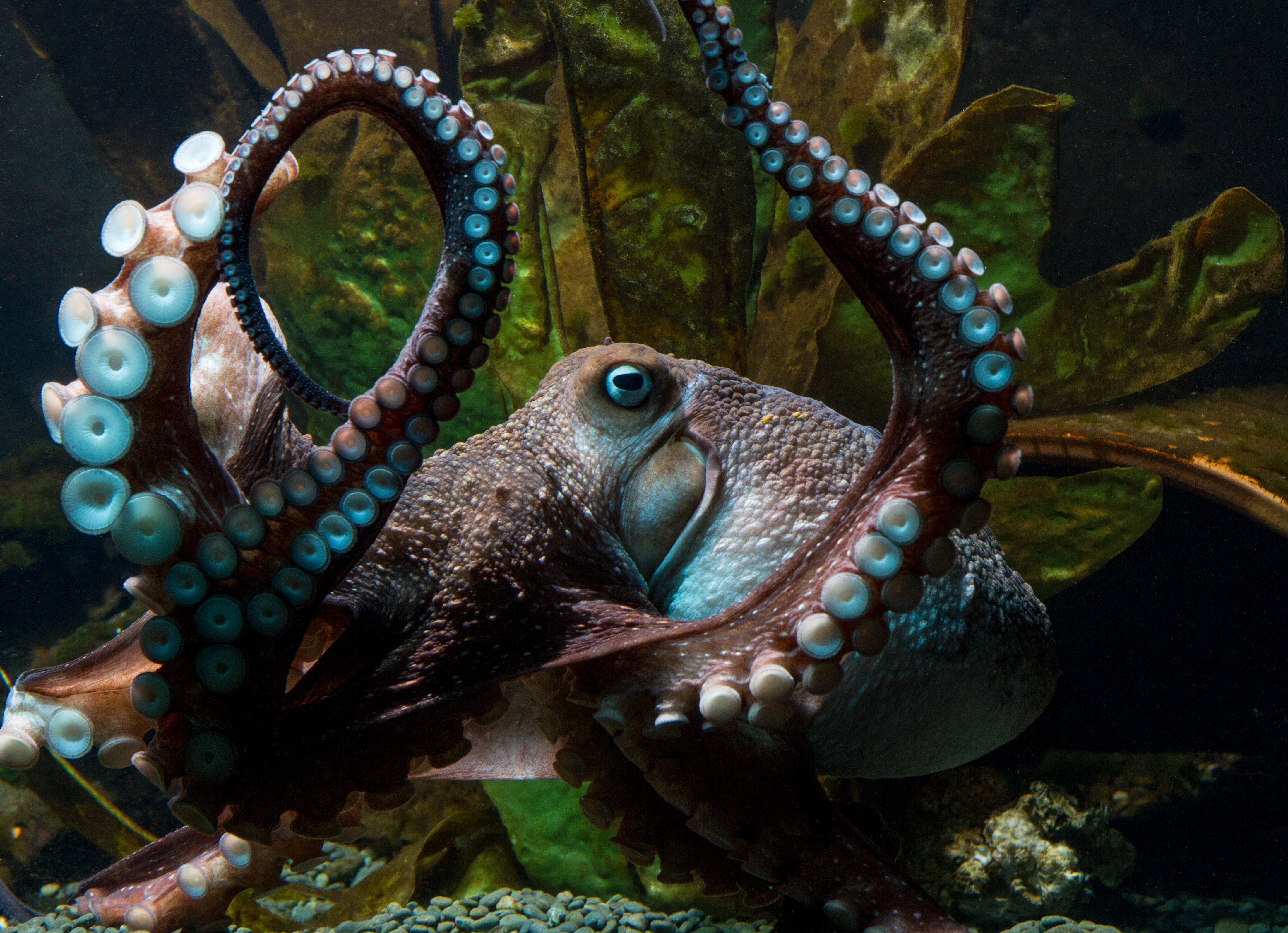Master of Escapes: How an Octopus Broke Out of Its Aquarium

In the dark of night, an enterprising octopus named Inky snuck out of his tank at the National Aquarium of New Zealand and made an eight-armed dash for freedom.
After squeezing through the top of his tank, Inky slithered across the deserted aquarium floor and shimmied down a 6-inch-wide (15 centimeters) drainpipe that — luckily for him — led directly to the sea.
Inky's breakout came as no surprise to marine biologists who study these natural escapologists. "They are curious, inquisitive animals," said Roger Hanlon, a senior scientist at the Marine Biological Laboratory in Woods Hole, Massachusetts. "They forage hundreds of meters per day looking for food and mates and different shelters. This is an ambulatory animal, so the idea that they would want to move outside their tank in an aquarium is not at all surprising." [8 Crazy Facts About Octopuses]
Octopuses have escaped their enclosures before, said Hanlon. From unscrewing tightly capped jars to crawling out of their tanks, these marine animals have fascinated both scientists and the public with their skills.
Underwater, octopuses have keen eyesight, but even after climbing out of a tank, they can use the suckers on their arms for touch and taste, as well as for suction. Each arm has about 200 suckers and thousands of neurons per sucker, according to Hanlon. And together, these suckers act as a well-coordinated unit, allowing an octopus to "walk" across the seafloor, through the shallow water between tide pools and even on aquarium floors.
Although octopuses can survive out of water for a few minutes, they don't like really dry floors, said Hanlon. If Inky had found a wet trail on the aquarium floor, he probably would have taken that route instead to keep the cuticles on his suckers moist. "It's extremely important for octopuses to protect their complicated suckers," said Hanlon. "If it walks across a dry floor, that cuticle gets pulled off, and it's a bit like getting your fingernail pulled off."
But in the ocean, octopuses like crawling around, and go into and out of holes all of the time, said Christine Huffard, a cephalopod biologist at the Monterey Bay Aquarium Research Institute in Moss Landing, California. The animals have no bones in their bodies, so they can fit through small cracks, or even spaces in an aquarium lid. And they have developed a whole host of other adaptations so they can avoid predators, including the ability to camouflage rapidly, change their appearance to look like a jigsaw puzzle gone awry and blend into the ocean waves by matching the speed of the waves. [Video: Watch a Clever Octopus Make Like a Flatfish]
Sign up for the Live Science daily newsletter now
Get the world’s most fascinating discoveries delivered straight to your inbox.
"Octopuses are highly evolved and specialized," Hanlon told Live Science. "They have the largest, most complex brain of any invertebrate animals on Earth." These complex brains allow octopuses to process information and make decisions about which tricks to deploy to escape predation (or an aquarium). They can also form mental maps recording the locations of their dens even after a long forage over several hours and many habitat types, said Hanlon.
It is part of an evolutionary response to the complex and dangerous coral reef environment the animals live in, he said, because diving marine mammals and birds like to snack on octopuses, as do sharks, eels and meat-eating fish like barracudas and groupers.
Inky, who was a common New Zealand octopus, probably used these brainy skills to sneak out of the National Aquarium in Napier, New Zealand, said aquarium manager Rob Yarrall. And although Inky left behind another octopus that shared the same tank, octopuses are solitary creatures, so Inky is unlikely to be missed — though his former tank-mate could still decide to make a go for it, too.
Follow Knvul Sheikh on Twitter @KnvulS. Follow Live Science @livescience, Facebook & Google+. Original article on Live Science.










